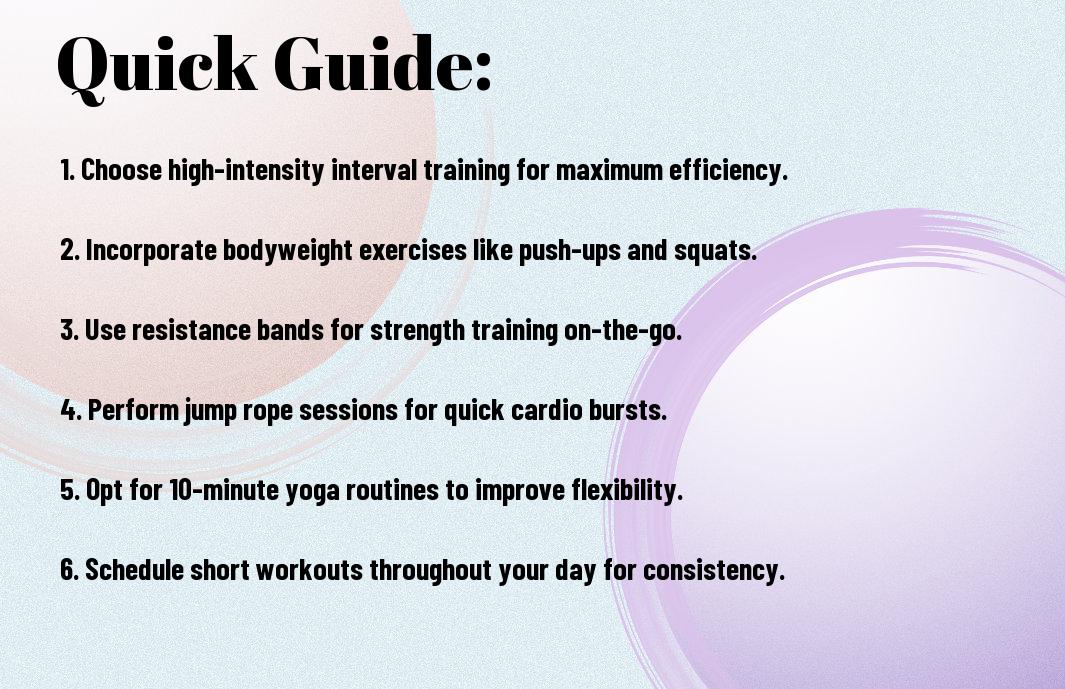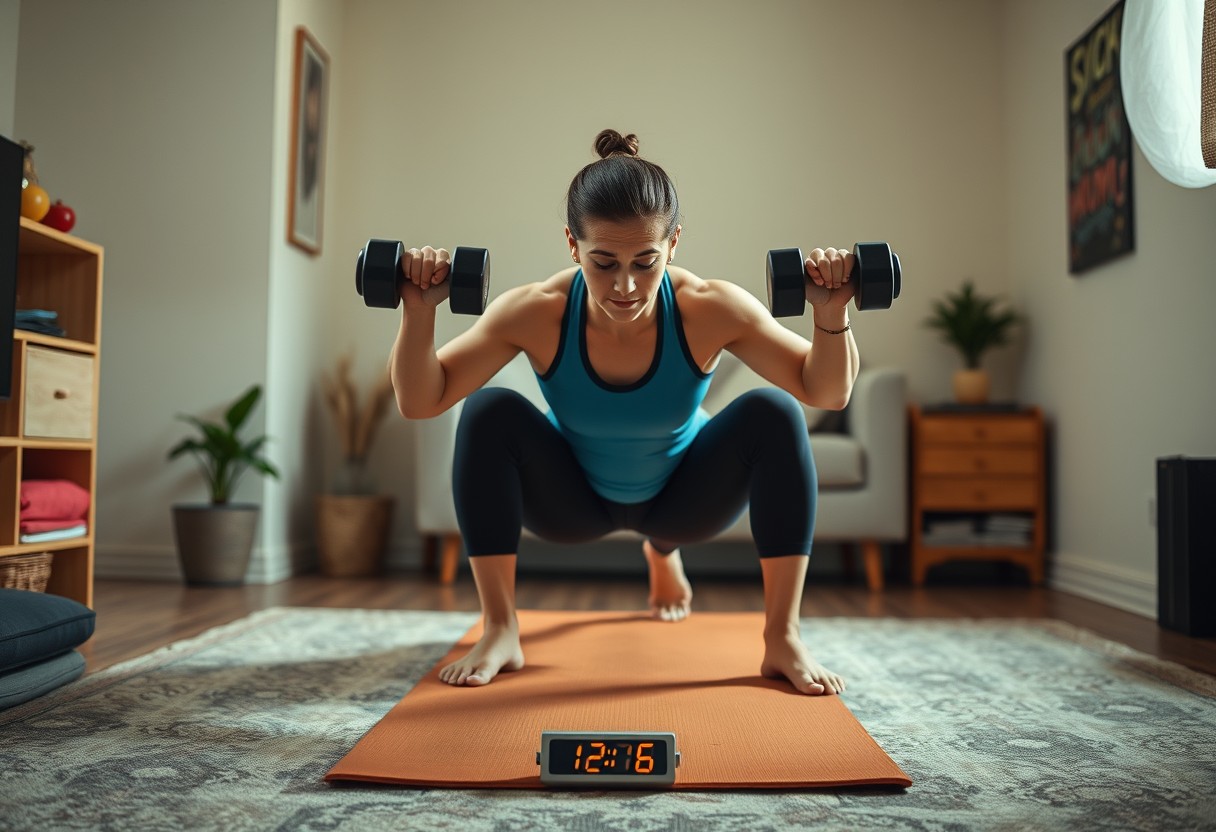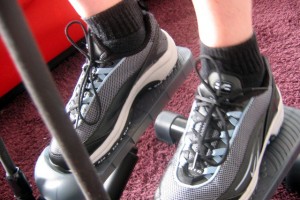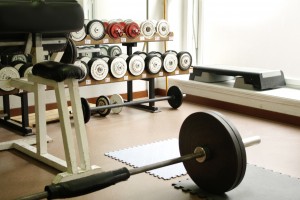Just because your schedule is packed doesn’t mean your fitness has to suffer. This guide provides you with 15 easy exercises that fit seamlessly into even the busiest days. Whether you’re at home, in the office, or outdoors, these quick workouts will help you stay active and boost your well-being without demanding much of your precious time. Dive in and discover how you can maintain your fitness routine effortlessly!
Key Takeaways:
- Efficiency: These exercises are designed to maximize your workout in a short amount of time.
- Variety: A mix of cardio, strength, and flexibility routines keeps workouts engaging and covers all fitness bases.
- No equipment needed: Many of the suggested exercises can be performed using just your body weight, making them accessible anywhere.
- Short duration: Each exercise can often be completed in 10-15 minutes, making them easy to fit into a busy schedule.
- Boosts energy: Regular incorporation of these quick workouts can enhance overall energy levels and improve mood.

Types of Exercises
The key to staying fit when time is tight is to incorporate a variety of exercises into your routine. Here are some effective types you can easily fit in:
|
Assume that you will mix these types to create a well-rounded fitness plan that suits your schedule.
Bodyweight Exercises
On days when you’re pressed for time, bodyweight exercises can be your best friend. They use your body as resistance, eliminating the need for equipment while effectively building strength and endurance. (Focus on mastering form before increasing difficulty.)
Resistance Training
The use of resistance training is imperative for building muscle and enhancing your overall fitness level. By incorporating free weights, machines, or elastic bands into your routine, you can effectively target specific muscle groups while increasing your metabolic rate.
Training with resistance not only helps you build lean muscle but also aids in improving bone density and strength. To effectively implement resistance training, aim for at least two sessions per week, incorporating a mix of exercises targeting all major muscle groups for balanced development.
Tips for Maximizing Efficiency
Any time you dedicate to exercising can yield results if you focus on maximizing your efficiency. Here are some strategies to consider:
- Prioritize compound movements that engage multiple muscle groups.
- Limit rest periods between sets to keep your heart rate up.
- Plan your workouts in advance to save time.
- Track your progress to stay motivated and accountable.
- Stay hydrated and nourish your body appropriately pre- and post-workout.
Knowing how to manage your time effectively can enhance your fitness journey.
Shorter Workouts
With busy schedules, shorter workouts can be a game-changer. High-intensity sessions that last 20-30 minutes still offer significant benefits, allowing you to maintain your fitness without lengthy commitments.
Incorporating HIIT
Clearly, high-intensity interval training (HIIT) can elevate your workouts. By alternating short bursts of intense exercise with brief recovery periods, you maximize calorie burn and improve cardiovascular health in a remarkably short time.
Shorter intervals, such as 20 seconds of sprinting followed by 10 seconds of rest, push your fitness to the limit while keeping you engaged. Adopting HIIT not only saves time but also boosts metabolism, allowing you to burn calories long after your workout. By incorporating HIIT into your routine, you can achieve significant improvements in endurance and strength without requiring lengthy sessions at the gym.
Step-by-Step Guide to Quick Workouts
Keep your fitness routine simple and effective with quick workouts that fit your busy schedule. Here’s a breakdown of elements to include in your routine:
| Workout Element | Description |
| Warm-Up | Prepare your body for exercise with light movements. |
| Strength Training | Use bodyweight or quick resistance exercises. |
| Cardio | Incorporate high-intensity intervals for heart health. |
| Cool Down | Ease your body back to rest with stretching. |
Warm-Up Routine
Even a brief warm-up can significantly enhance your performance and reduce injury risk. Start with 5 minutes of dynamic stretches or light cardio, such as jogging in place or arm circles, to elevate your heart rate and loosen your muscles. This preparation sets the tone for a productive workout session.
Sample 10-Minute Workouts
Little time should not deter you from a successful workout. Try these 10-minute routines that blend cardio and strength exercises to maximize results in a short period. (It’s vital to tailor these workouts to fit your fitness level.)
To create effective 10-minute workouts, alternate between exercises like push-ups, jump squats, and burpees with short rest intervals. For example, perform each exercise for 30 seconds, followed by 10 seconds of rest, repeating the circuit. (Deciding how intensely you push yourself during this time is key to achieving your fitness goals.)

Factors to Consider
Your fitness journey is impacted by various factors that can enhance or limit your workout routine. It’s important to evaluate these elements to ensure you choose the right exercises for your situation:
- Your current fitness level
- The type of equipment you have access to
- Your available workout space
- Your schedule and time constraints
The proper assessment of these factors can lead to a more effective and enjoyable fitness experience.
Personal Fitness Level
The most important aspect of your fitness journey is your personal fitness level. Understanding your current capabilities and limitations can significantly help you tailor your workout regimen. Whether you are a beginner or an experienced athlete, adjusting the intensity and complexity of exercises ensures optimal results and reduces the risk of injury.
Available Equipment
Assuming you have access to various pieces of equipment, this opens up numerous exercise possibilities. It’s worth considering what you have at home or at your gym (as this will influence your workout options). If you’re relying solely on bodyweight exercises, make sure to select those that are effective and suit your fitness level.
This equipment consideration extends to how much space you have and whether you prefer free weights or machines. An effective workout can be achieved with minimal gear, but prioritizing activities that align with your goals is important (effectively using what you have increases workout satisfaction and results).
Pros and Cons of Quick Workouts
Now, it’s necessary to understand the pros and cons of quick workouts to determine if they are the right choice for your fitness routine. Below is a breakdown of advantages and disadvantages:
| Pros | Cons |
|---|---|
| Time-efficient | May lack variety |
| Can boost metabolism | Limited muscle engagement |
| Convenient for busy schedules | Risk of overtraining |
| Suitable for all fitness levels | May not meet specific goals |
| Improves cardiovascular health | Requires discipline |
Advantages of Time-Efficient Exercises
With busy lifestyles, time-efficient exercises can be a great way for you to stay fit without lengthy gym sessions. These workouts can fit into your schedule, allow for consistency, and yield benefits despite their short duration. Quick workouts may even provide sufficient intensity to maintain or improve your fitness levels, making them a practical option for many.
Limitations and Considerations
Advantages of short workouts may come with limitations, so it’s wise for you to consider your fitness goals. While these exercises can offer you quick results, they might not provide enough volume for muscle building or specific athletic training. You should assess your individual needs and ensure quick workouts align with your overall fitness objectives. (This reflection will guide you in making the best choice for your health journey.)
The effectiveness of quick workouts can vary depending on several factors, including the type of exercises you choose, your fitness experience, and how often you incorporate them into your routine. If building strength or endurance is your goal, you might need to supplement quick workouts with longer sessions or varied exercises. (Being clear about your goals will help you effectively integrate quick workouts into your fitness plan.)
Maintaining Consistency
Once again, consistency is key to making the most out of your quick workout sessions. By establishing a routine that fits into your daily life, you can carve out time for your exercises, no matter how busy your schedule gets. Prioritizing your fitness journey means transforming short workouts into a habit, allowing you to experience lasting results. Consistent practice will not only improve your physical health but also elevate your mental well-being, making it easier to navigate the demands of your day-to-day activities.
Setting Realistic Goals
Even when you’re pressed for time, setting realistic goals helps keep your fitness journey on track. (An important decision here is to ensure these goals are achievable within the time constraints you face.) By breaking down your aspirations into smaller, attainable targets, you can maintain motivation and celebrate each victory along the way. Focusing on progress rather than perfection will enhance your commitment and make your fitness journey more enjoyable.
Tracking Progress
The best way to stay accountable and motivated is by tracking your progress over time. Keeping a record of your workouts allows you to visually see improvements in strength, endurance, and overall fitness. Not only does this practice help you understand what’s working for you, but it also provides insight into areas that may need adjustment, ensuring your fitness routine evolves with you.
Tracking your progress can be as simple as maintaining a journal or using fitness apps to log your workouts. You can include details such as the types of exercises you performed, duration, and any personal records you achieve. Additionally, visual aids like graphs or charts can further motivate you by illustrating your growth over time. Regularly reviewing your progress will reinforce your commitment, helping you stay on course even during those busy days.
Conclusion
The 15 easy exercises outlined can significantly enhance your fitness routine, even when time is limited. By incorporating these simple yet effective movements into your daily life, you can maximize your health benefits and maintain your physical well-being. Prioritize consistency over duration, and soon you’ll discover that even short workouts can lead to impressive results. You have the tools to keep yourself fit, so make the most of each opportunity to move your body and achieve your fitness goals.
FAQ
Q: What are some quick exercises I can do in a short amount of time?
A: There are several effective exercises you can incorporate into your routine when you’re short on time. Some great options include bodyweight squats, push-ups, planks, and jumping jacks. These exercises can be performed in as little as 5-10 minutes and can be done at home or in a small space. Additionally, consider high-intensity interval training (HIIT) for a quick, efficient workout that combines cardio and strength training.
Q: How can I fit these exercises into a busy schedule?
A: Fitting exercises into a busy schedule can be challenging, but it’s possible with a bit of planning. Consider setting aside specific time slots in your day for physical activity, even if it’s just for 10-15 minutes. You can also combine exercises with daily tasks—such as doing squats while brushing your teeth or taking the stairs instead of the elevator. Incorporating short bursts of physical activity throughout the day can accumulate and help you stay fit.
Q: Do I need any equipment for these exercises?
A: Most of the exercises listed in “15 Easy Exercises to Help You Stay Fit When You’re Short on Time” can be performed without any equipment at all. Bodyweight exercises, such as lunges and burpees, rely solely on your own weight. However, if you have access to items like resistance bands, dumbbells, or a stability ball, feel free to incorporate them for added resistance and variety. The flexibility of these exercises makes it easy to adapt them to your environment and available resources.










Reply